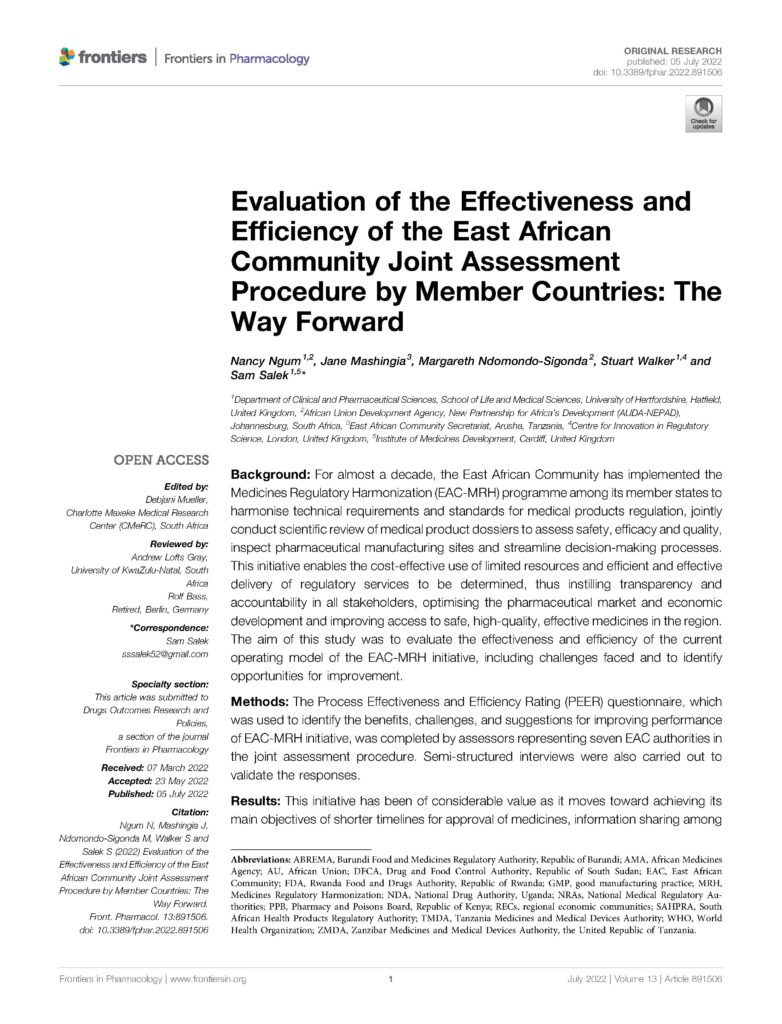Background: For almost a decade, the East African Community has implemented the Medicines Regulatory Harmonization (EAC-MRH) programme among its member states to harmonise technical requirements and standards for medical products regulation, jointly conduct scientific review of medical product dossiers to assess safety, efficacy and quality, inspect pharmaceutical manufacturing sites and streamline decision-making processes. This initiative enables the cost-effective use of limited resources and efficient and effective delivery of regulatory services to be determined, thus instilling transparency and accountability in all stakeholders, optimising the pharmaceutical market and economic development and improving access to safe, high-quality, effective medicines in the region. The aim of this study was to evaluate the effectiveness and efficiency of the current operating model of the EAC-MRH initiative, including challenges faced and to identify opportunities for improvement.
Methods: The Process Effectiveness and Efficiency Rating (PEER) questionnaire, which was used to identify the benefits, challenges, and suggestions for improving performance of EAC-MRH initiative, was completed by assessors representing seven EAC authorities in the joint assessment procedure. Semi-structured interviews were also carried out to validate the responses.
Results: This initiative has been of considerable value as it moves toward achieving its main objectives of shorter timelines for approval of medicines, information sharing among regulators and capacity building for assessments, resulting in quicker access and increased availability of medicines for patients in the region. However, the key challenges identified that have hindered effectiveness and efficiency were the lack of a centralised submission and tracking system; inadequate human resources, manufacturers’ failure to submit the exact same dossier to all countries of interest; lack of an integrated information management system; lack of information on national medical regulatory authority or EAC websites; and challenges in monitoring and tracking assessment reports.
Conclusions: The use of a robust information technology system for the central tracking of EAC products is essential to address the identified challenges and improve regulatory effectiveness and efficiency. One central point for payment is needed to expedite the process and to ensure transparency and the availability of information on decision making on national and regional websites. Other key strategies for enhancement include improving the capacity of assessors, work and information sharing and a coordination mechanism for the regional joint assessment, with the eventual establishment of a regional medicine agency.
Ngum N, Mashingia J, Ndomondo-Sigonda M, Walker S and Salek S (2022) Evaluation of the Effectiveness and Efficiency of the East African Community Joint Assessment Procedure by Member Countries: The Way Forward. Front. Pharmacol. 13:891506. doi: 10.3389/fphar.2022.891506

